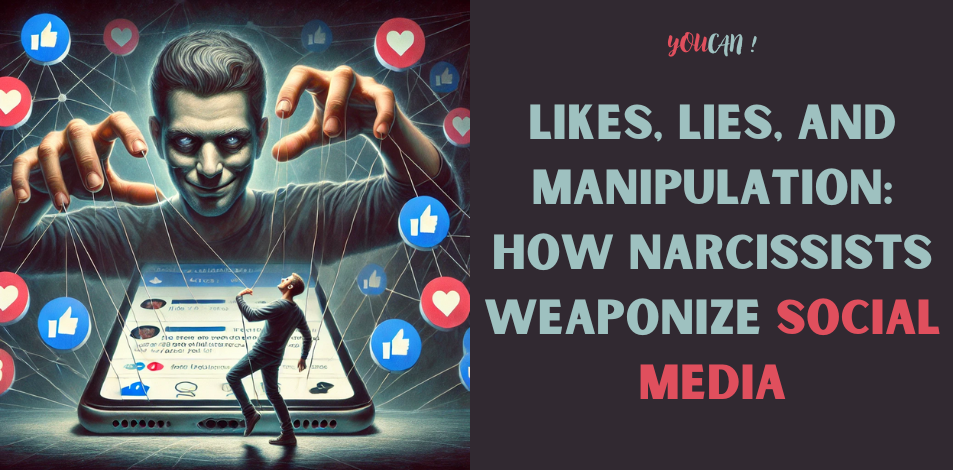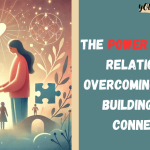
Social media has revolutionized the way we communicate, engage, and build relationships. Platforms like Instagram, Facebook, and TikTok offer endless possibilities for expression and interaction. But beneath this vibrant ecosystem lies a darker truth—how narcissists exploit these platforms for personal gain, validation, and control.
Understanding this manipulation is vital to protecting yourself and fostering healthy online spaces. This article will cover the subtle strategies narcissists use, how to spot red flags, and practical steps to protect your digital well-being.
Narcissist Playground: Why Social Media Attracts
Narcissists thrive in environments where they can receive constant attention and admiration. Social media provides the perfect stage, offering tools like likes, comments, and shares, which act as fuel for their ego.
These platforms also allow for image-crafting—a key tactic in the narcissist’s arsenal. By carefully choosing posts and projecting an idealized version of themselves, they create a facade that attracts admiration while concealing their true nature.
Furthermore, the anonymity and access to social media allow narcissists to operate in ways that amplify their control. They can manage multiple personas at once, target multiple individuals, and easily escape accountability.
How Narcissists Weaponize Likes and Verification
Narcissists are experts at exploiting the verification cycle. Here’s how they do it:
Post for maximum impact: They often post content designed to garner attention, such as provocative statements, lavish displays of wealth, or heavily filtered selfies. This entices their audience to provide the likes and comments they crave.
Manipulate through engagement: A narcissist may shower you with likes and comments to gain your trust. Once they’ve won you over, they can withdraw this attention as a form of punishment or control.
Use social proof: High follower counts or engagement levels are used to create the illusion of popularity and credibility, making it difficult for others to question their motives.
This addiction to validation doesn’t just affect narcissists. It also traps their victims, making them complicit in a toxic cycle that reinforces the narcissist’s behavior.
Lies and Image Management
Social media enables narcissists to fabricate a carefully curated identity. This “ideal self” can be very different from their true self, and they use this persona to attract uninformed followers or victims.
They may portray themselves as:
Incredibly successful: They brag about expensive things or accomplishments that may not even exist.
Overly generous: They share posts about charity or kindness to appear sympathetic.
Victims of circumstance: They use posts about struggles to garner sympathy and manipulate others into supporting them.
These lies serve multiple purposes. They attract admiration, remove suspicion, and help the narcissist isolate their targets from potential allies who might see through their facade.
Emotional Manipulation and Emotional Manipulation
Narcissists often exploit social media to manipulate their victims. Emotional manipulation involves making someone question their perception of reality, and on social media, this takes unique forms.
Selective memory: They may delete comments, untag themselves from posts, or deny online interactions to distort your memory of events.
Public shaming: Narcissists may post vague or indirect messages criticizing or belittling someone, forcing the victim to confront them in private while appearing “innocent” to others.
Love bombing and ignoring: They alternate between showering their targets with affection and attention (love bombing) and withdrawing completely (ignoring), leaving the victim confused and emotionally dependent.
The goal is to keep their targets in a state of self-doubt and emotional vulnerability, making them easier to control.
Flying Monkeys
A common tactic in narcissistic manipulation is the use of “flying monkeys”—people who intentionally or unintentionally support the narcissist in their schemes. Social media makes it easy for narcissists to recruit these enablers by:
Portraying themselves as victims to garner sympathy and support.
Sharing selective or false narratives to turn others against their target.
Encouraging their followers to harass or criticize someone on their behalf.
These enablers amplify the narcissist’s power, making it harder for the victim to escape the cycle of manipulation.
How to Spot the Signs
Protecting yourself starts with recognizing the red flags. Here are some warning signs that someone may be using social media in a manipulative way:
Overly curated profiles: Their social media presence appears too perfect, with no room for flaws or weaknesses.
Excessive self-promotion: Posts are mostly about their accomplishments, possessions, or appearance, with little regard for others.
Inconsistent Behavior: They act supportive in public but criticize or belittle you in private.
Vague Sharing: They post vague messages designed to arouse curiosity or sympathy but never provide clear explanations.
Conflict Patterns: They often have public feuds or drama with others, portraying themselves as the victim every time.
Trust your instincts. If someone’s behavior seems manipulative or insincere, it probably is.
Take Action: How to Protect Yourself
Here are practical steps to protect your mental and emotional health on social media:
Limit Engagement: Limit the number of times you interact with individuals you suspect of narcissistic behavior.
Set Boundaries: Don’t feel obligated to respond to messages or comments immediately. Take control of your time and energy.
Strengthen Privacy Settings: Keep your personal information safe by using the strictest privacy settings available.
Fact Checking: Don’t take everything you see at face value. If someone’s claims seem exaggerated, seek outside validation.
Seek support: If you feel you’re being manipulated or harassed, reach out to friends, family, or trusted professionals.
Empowering yourself with knowledge and strategies is the first step in breaking free from toxic online dynamics.
See also: Unmasking the Chaos: Why Narcissists Sabotage Relationships
Encouraging Healthy Social Media Use
Social media is not inherently bad. It is a tool, and its impact depends on how we use it. By fostering self-awareness and critical thinking, we can reduce the impact of narcissistic manipulation online.
Start by decluttering your feed. Follow accounts that inspire positivity, education, and meaningful connection. Unfollow or mute those that promote negativity or make you feel inadequate.
Be mindful of your behavior, too. Think about why you’re posting and whether your content aligns with your values. Encourage authentic connections by engaging with others in a supportive and constructive way.
Final Thoughts
Narcissists exploit the features of social media to manipulate, control, and deceive. But by recognizing their tactics and taking proactive steps, you can protect yourself and others from falling into their traps.
Remember, your digital space should be a reflection of your values and well-being. By fostering authenticity and awareness, you can reclaim social media as a platform for authentic connection and growth.
Read Also: Master the Art: Outsmarting a Narcissist in Arguments




